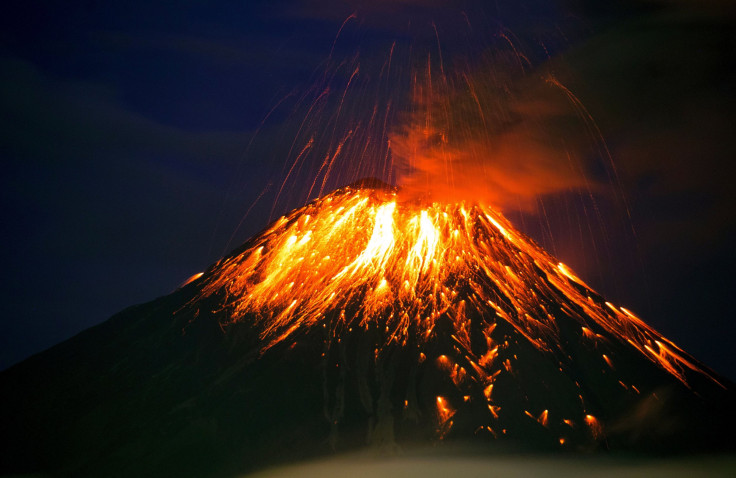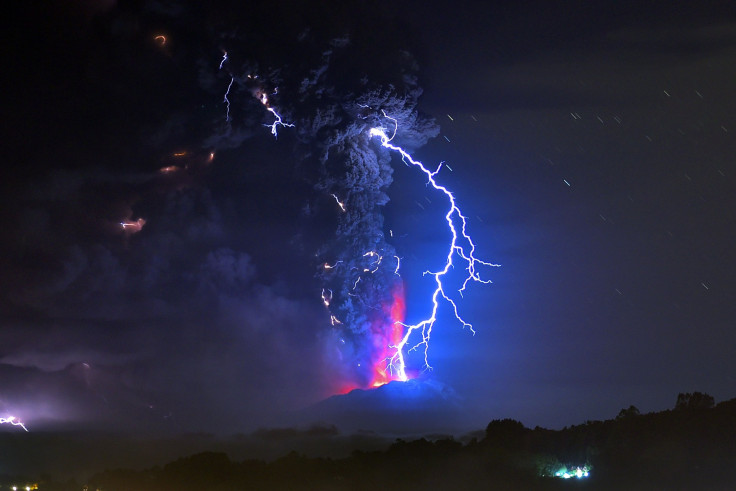What Can Stop Volcanoes From Erupting? Old Magma Acts Like Earth Condom

Magma is potentially deadly when it gushes out of volcanoes and oozes down onto the Earth’s surface as lava, but sometimes this molten rock can be your friend — scientists say there are times when magma actually stops volcanoes from erupting.
A team used models of how magma and the Earth’s crust move around at the site of volcanoes to untangle the mystery of why the liquid rock can sometimes build up underneath without exploding upward. It turns out the answer is older magma: According to a study in the journal Nature Communications, the magma that was already there cools down and forms a sort of rubbery barrier that prevents its fresher counterpart from piercing through to the surface.
When a volcano erupts, underground areas that were previously filled with material have suddenly been cleared out, which can cause the top of an empty chamber to collapse. Scientists call the expanse of collapsed Earth around a volcano a caldera, and it can potentially stretch for miles.
But there is a phenomenon at the caldera that has been a head-scratcher — when some time after the collapse Earth injects fresh molten rock into the space below and the caldera experiences a disproportionate uplift in the ground, rather than the volcano erupting once more.
The scientists on this new research looked to understand this “caldera resurgence” by investigating how magma cools. They found that the magma that is left over in the subsurface chamber from the first eruption becomes more viscous as it cools, creating a barrier between new magma and the surface. Although the increase in material underground causes the surface to bulge, the barrier, what the researchers refer to as a “thick transition zone,” prevents the hot rock from popping through the crust to Earth’s surface.
According to a statement from the University of Geneva, the findings hold implications for more than just this one volcanological phenomenon; it could help scientists understand how other eruptions work.
“The process we discuss is essential not only to develop resurgence, but also for the formation of the magma reservoirs responsible for the largest eruptions on Earth,” researcher Valerio Acocella said.

© Copyright IBTimes 2024. All rights reserved.











